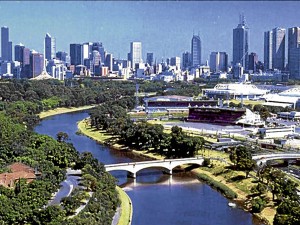Green Architrends
What will Metro Manila be like in 2030?
By: Amado de JesusPhilippine Daily Inquirer

MELBOURNE was judged in August 2011 as the most livable city by the Economist Intelligence Unit considering availability of goods and services, low personal risk and an effective infrastructure.umagoya.net
What will Metro Manila be like 19 years from now? How will it deal with natural disasters, especially those brought about by climate change? What will be the sources of energy? Will transportation problems be solved by then? How will it handle corruption? How about the environment?
These are some of the issues discussed recently during a series of workshops titled “The Asia City Innovation System Project” or CIS-ASIA. The project aims to document, analyze and forecast the social issues that threaten the development and growth of cities more specifically in Southeast Asia.
CIS-ASIA was collaborated by six major Asean cities, namely: Bangkok, Ho Chi Minh, Jakarta, Kuala Lumpur, Manila and Singapore, and seeks to document, analyze and forecast major urban issues that will lead to city innovations for a more livable, prosperous and equitable city living.
The consultation process conducted through workshops included stakeholders representing the academe, industry and government.
Rapid urbanization
The world faces rapid urbanization as the United Nations reports that the world population is seen to be 69 percent urban in 2050. The greater percentage of increase in the urban population is concentrated in cities and towns of less developed economies.
This trend in urbanization led to the formation of megacities like Metro Manila. Megacities have more than 10 million in population.
In 2025, the same report predicted that more than half of the world’s 20 megacities will be in Asia including Manila and Jakarta in Southeast Asia.
This speedy migration of people to the city imposes strain on resources and creates social problems on housing, environment, transportation system, health and sanitation, and peace and order.
The Philippines, is described as a newly industrialized economy and the fastest growing economy in Southeast Asia. According to the World Economic Forum 2010, it is classified as a factor driven economy, ranked 85 out of 139 countries for global competitiveness.
Young population
The gold mine is our young population. Philippine population is young with 34.6 percent in age group 0-14 years, 61.1 percent in 15-64 years age group and 4.3 percent for 65 years and above.
This is in stark contrast to Norway for example where the average age today is 57 years old. In France, the average age is 39. This has given rise to the terms greying and shrinking cities in many discussions regarding future cities.
The project came up with 3 scenarios in 2030 based on current trends and present situation in the city.
Future scenarios
Mobility in the city will be improved with more roads and means of transportation through the build-operate-transfer scheme of the government.
Most schools will be privately owned so literacy will be maintained and quality of education will be dictated by competitive forces. The public school system will require mandatory enrolment of students up to age 16.
Unabated unemployment will encourage the youth to be entrepreneurs rather than employees.
Unemployment will continue to rise since no effective programs have been instituted by the government. More people will try to find employment outside the country.
Current research will give rise to city farming and hydroponics technology in plants. Online business and transactions will be the norm.
No comments:
Post a Comment